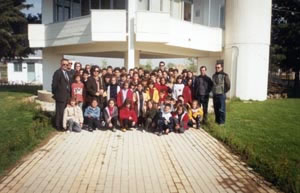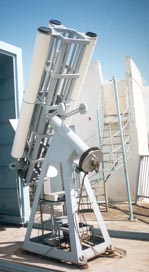 |
-
-
Lunar
Occultation
An important international astronomical
program which concerns the timing determination of occulted and
divulged stars from the lunar disk. The accomplished lunar occultation
observations are sent to the International Occultation Timing
Association (IOTA), which has the international supervision of the program.
-
Stellar Photoelectric Photometry
(PEP)
The Observatory of Larissa
has been participating for years at the international AAVSO Photoelectric
Photometry (PEP) observing program whose purpose is to study
a group of 80 specially selected macro-periodic variable stars with
small wavewidth. We make experimental observations with photoelectric
and ocular methods in order to determine the minimum periods of
the special category of variable of Algol type (eclipsing binary stars).
We also participate in the concurrent program of photoelectric
photometric observation of the star IM PEG. The purpose of the earthy
and satellite observations is to accomplish a sophisticated examination
of certain aspects of the theory of relativity.
-
Geophysical program
a) We monitor the seismic activity of the wider
area of Thessaly with seismograph of the Observatory. The recorded
earthquakes, after their calculation and archiving in special publications,
are then sent to the Geophysical Laboratory of the Aristotle University
of Thessalonica and the Geodynamic Institute of Athens.
- b)
Also, we
have installed nine accelerographers within the urban web of Larissa,
with a prospect of thickening the ant seismic network. The purpose of this network is the determination
of the maximum terrestrial acceleration of Larissa.
-
Educational
program
The Observatory of Larissa
is visited by students of all levels all year round. In the specially
adapted and equipped with modern projection instruments room
at the second floor, we provide lectures and projections of films
or videos of astronomic interest. Also, on all Thursday afternoons
admission to the Observatory is free for all members of the public.

|

